Kenneth Atchity's Blog, page 126
January 6, 2018
Writing in the Cold by Ted Solotaroff
"As far as I can tell, the decisive factor is durability. For the gifted writer, durability seems to be directly connected to how one deals with uncertainty, rejection, and disappointment, from within as well as from without, and how effectively one incorporates them into the creative process itself, particularly in the prolonged first stage of a career." ~ Ted Solotaroff
Writing in the Cold is a Brilliant Essay on the Psychology of Writing by Ted Solotaroff from The Pushcart Prize. It is absolutely the very best and most inspiring essay for late bloomer writers. It’s also the most insightful on the emotional and psychological struggles that are part of becoming a writer. (Anita Mathias)
Writing in the Cold by NotreaderX on Scribd
Writing in the Cold is a Brilliant Essay on the Psychology of Writing by Ted Solotaroff from The Pushcart Prize. It is absolutely the very best and most inspiring essay for late bloomer writers. It’s also the most insightful on the emotional and psychological struggles that are part of becoming a writer. (Anita Mathias)
Writing in the Cold by NotreaderX on Scribd

Published on January 06, 2018 00:00
January 4, 2018
Science Says These are the Oldest 23 Words in the English Language
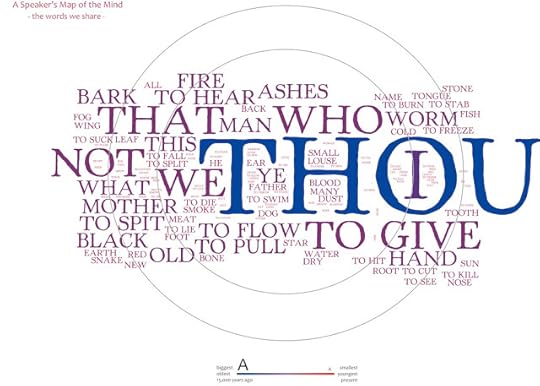
They've lasted over 15,000 years.
Not a lot of things last over a thousand years; even fewer last over 10,000.
Yet a British research team has put together a list of what they called "ultraconserved words," or words that have remained basically unchanged for a stunning 15,000 years.
The researchers say this is because they all originate from the same ancient mother tongue -- a language used toward the end of the last ice age. That language tumbled from its tower of Babel to become seven language families, which all sound like they're out of Game of Thrones: Altaic, Chukchi-Kamchatkan, Dravidian, Inuit-Yupik, Indo-European, Kartvelian, and Uralic.
The 700 modern languages used by more than half of earth's population descend from those seven original families. Researchers scanned them for cognates: words that sound and mean the same things in different languages, like "father" -- padre, pere, pater, pitar, etc. From those, they put together proto-words, or what they believed were the cognates' ancestral form.
Ultimately, they found 23 words shared by at least four of the seven language families, making them the oldest and longest-lasting words in English. Here they are in all their ancient -- and modern -- glory:
1. Thou
The singular form of "you," this is the only word that all seven language families share in some form. As soon as language evolved, we would have needed to identify each other, and specifically to refer to the person to whom we were speaking.
2. I
Similarly, you'd need to talk about yourself. Plus, what's the use of language if not to talk about yourself?
3. Mother
The last cry of most soldiers dying on the battlefield is "Mom," so it's no wonder that it's a primal word. It's also an interesting non-pair on the list: "mother" makes it, but "father" doesn't.
4. Give
Human survival has always been predicated on our ability to cooperate. Teamwork in early civilizations wasn't a nice-to-have -- you died without it. "I was really delighted to see 'to give' there," study head Mark Pagel said. "Human society is characterized by a degree of cooperation and reciprocity that you simply don't see in any other animal. Verbs tend to change fairly quickly, but that one hasn't."
5. Bark
As in from a tree, not a dog. Anthropologists suggest this was a particularly important element of early civilizations because it was used to make baskets, rope, and, when boiled in water, medicine. In fact, aspirin was originally willow bark tea.
6. Black
Likely because in its original form, it helped early humans distinguish the light of day from the black of night. Another non-pair: "black" makes the list but "white" doesn't.
7. Fire
Light, warmth, security, a way to cook, a way to keep the wolves away. For a long time (and for many, to this day), fire was the greatest tool for survival. It was the best way to keep the "black" at bay.
8. Ashes
Makes sense, given how critical fire was.
9. Spit
What happens when you try to eat ashes.
10. Man/Male
The fact that "woman" doesn't make the list gives one pause, and may point to the linguistic reality of the patriarchy that has ruled much of the planet for thousands of years.
11. Hand
After our brains, arguably the most important body part for a human being, especially with its accompanying opposable thumbs.
12. Hear
There were all kinds of things we needed to hear: the approaching footsteps of a predator; the sound of prey fleeing; the sound of a baby's cries.
13. Flow
Unclear why this was so foundational, but perhaps it had to do with another fundamental element required for survival: water.
14. Old
Wisdom is essential when it comes to survival. The old people in a tribe were respected and listened to, for the simple fact that they had seen more and therefore knew more. Our modern culture would do well to reinstate this kind of respect.
15. This
Probably because you'd need to be able to specify that you meant this rock.
16. That
Not that rock.
17. Pull
The list of things you needed to pull was endless: wood, animals, stones, etc. Combine it with the last one for a full sentence: "Pull that."
18. Worm
Possibly the most random word on the list.
19. Ye
This is now "your" in modern English. A useful word when asking about things around camp: "Ye worms?"
20. Not
"Not ye worms?"
21. We
"We need worms."
22. Who
"Who can find worms?"
23. What
Because even 15,000 years ago, when you couldn't hear what your brother had just said about worms but didn't want to get up from the basket you were weaving, you could always shout, "WHAT?"
Read more

Published on January 04, 2018 00:00
January 2, 2018
Myth to Movie: Pygmalion By Ken Atchity

The wish-fulfillment archetype —the dream become flesh—finds perennially poignant expression in stories based on the Pygmalion myth.
A Cyprian sculptor-priest-king who had no use for his island’s women, Pygmalion dedicated his energies to his art. From a flawless piece of ivory, he carved a maiden, and found her so beautiful that he robed her and adorned her with jewels, calling her Galatea (“sleeping love”). His became obsessed with the statue, praying to Aphrodite to bring him a wife as perfect as his image. Sparked by his earnestness, the goddess visited Pygmalion’s studio and was so pleasantly surprised to find Galatea almost a mirror of herself she brought the statue to life. When Pygmalion returned home, he prostrated himself at the living Galatea’s feet. The two were wed in Aphrodite’s temple, and lived happily ever after under her protection.
Though it was never absent from western literature, this transformation myth resoundingly entered modern consciousness with Bernard Shaw’s Pygmalion, which enlisted it to explore the complexity of human relationships in a stratified society. My Fair Lady, based on Shaw’s retelling, took the myth to another level of audience awareness.
The obligatory beats of the Pygmalion myth: the protagonist has a dream inspired by encounter with an unformed object (“Look at her, a prisoner of the gutter!”), uses his skills and/or prayers to shape it into a reality; falls in love with the embodiment of his dream, and lives happily ever after, or not.
Essential to the pattern is that the dreamer-protagonist is rewarded for doing something about his dream, for turning it from dream to reality with or without a dea ex machina. Thanks to the infinite creativity of producers, directors, and writers, Pygmalion has generated countless wonderful movie story variations: Inventor Gepetto, in Pinocchio (1940--with numerous remakes), wishes that the wooden puppet he’s created could become the son he never had; a department store window dresser (Robert Walker), in One Touch of Venus (1948, based on the Ogden Nash/S. J. Perelman musical), kisses a statue of Venus (Ava Gardner) into life— trouble begins when she falls in love with him. In 1983’s thenEducating Rita (from Willy Russell’s play), a young hairdresser (Julie Walters), wishing to improve herself by continuing her education, finds a tutor in jaded professor (Michael Caine), who’s reinvigorated by her. In a reverse of the pattern, as quickly as she changes under his tutelage he resents the “educated” Rita and wants her, selfishly, to stay as she was.
Alvin Johnson (Nick Cannon), in 2003’s Love Don’t Cost a Thing, a remake of Can’t Buy Me Love (1987), comes to the rescue of Paris (Christina Milian) when she wrecks her mother’s Cadillac and can’t pay the $1,500 for the repair. Alvin fronts the cash with his savings and, in return, Paris has to pretend to be his girlfriend for two weeks; Alvin becomes “cool” for the first time in his life, but learns that the price of popularity is higher than he bargained for. In She’s All That (1999), the pattern is reversed as Freddie Prinze, Jr., is a high school hotttie who bets a classmate he can turn nerdy Rachel Leigh Cook into a prom queen but, of course, runs into trouble when he falls in love with his creation. In The Princess Diaries (2001), Mia (Anne Hathaway), a gawky Bay Area teen, learns her father was the prince of Genovia; the queen (Julie Andrews) hopes her granddaughter will take her father’s rightful place as heir, and transforms her from a social misfit into a regal lady but discover their growing love for each other is more important than the throne.
Pretty Woman (1990) is my second favorite example of the tirelessness of the Pygmalion myth. Taking the flower-girl motif of My Fair Lady to the extreme, Vivian (Julia Roberts) is a prostitute (albeit idealized) and Edward (Richard Gere) a ruthless businessman with no time for real love. As he opens his credit cards on a Rodeo Drive shopping spree, we experience a telescoped transformation-by-money accompanied with the upbeat music that reminds us that we love this highly escapist part of the Pygmalion story, the actual process of turning ugly duckling into princess swan.
My favorite example is La Femme Nikita (remade as Point of No Return, 1993, with Bridget Fonda), because it shows the versatility of mythic structure, taking Pygmalion to the darkest place imaginable as it fashions of street druggie Nikita (Anne Parillaud), under Bob’s merciless tutelage (Tcheky Karyo), a chameleon-like lethal sophisticate whose heart of gold allows her to escape both her unformed past and her darkly re-formed present.
So popular is the Pygmalion myth with audiences that it crops up in the most unlikely places. In Pao zhi nu peng you (My Dream Girl, 2003), Shanghai slum-dweller Cheung Ling (Vicki Zhao) is thrust into high society when she encounters her long-lost father, who hires Joe Lam to makeover his daughter to fit her new status. In Million-Dollar Baby (2004), the unformed matter (Hilary Swank) reports for duty and demands to be transformed. Instead of falling in love, the boxing instructor (Clint Eastwood) is reborn, reinvigorated, re-inspired, learns to feel again—thereby revealing the underlying emotion that drives the Pygmalion myth for both protagonist and the character he reshapes: rebirth into a more ideal state of being.
First published in Produced By, the official magazine of the Producers Guild of America

Published on January 02, 2018 00:00
December 31, 2017
HAPPY NEW YEAR 2018!!
Published on December 31, 2017 00:00
December 29, 2017
First Photo From THE MEG Sees Giant Prehistoric Shark Stare Down Jason Statham

The big screen adaptation of Steve Alten's 1997 novel Meg: A Novel of Deep Terror is finally on its way after decades of production drama, and we finally have our first look at the upcoming movie, titled The Meg. Courtesy of Empire, we have our first look at Jason Statham as he's stared down by pre-historic 75-foot-long shark known as the Megalodon.
In addition to the first photo, Statham also opened up about his role in the film. "I play a former navy captain and diver and I get hired to rescue a team of scientists who are trapped at the bottom of hte sea in their research station by a giant shark. Then all hell breaks loose," the actor teased.
As for why fans should look forward to the movie, Statham simply puts it, "who doesn’t want to watch a film about the biggest shark that’s ever existed?” Measuring at 75-feet-long, the Megalodon puts the creatures you see on Shark Week and Sharknado Week to shame.
For those unfamiliar with the source material, the official synopsis for The Meg provides a better idea of what to expect.
“In the film, a deep-sea submersible—part of an international undersea observation program—has been attacked by a massive creature, previously thought to be extinct, and now lies disabled at the bottom of the deepest trench in the Pacific…with its crew trapped inside. With time running out, expert deep sea rescue diver Jonas Taylor (Jason Statham) is recruited by a visionary Chinese oceanographer (Winston Chao), against the wishes of his daughter Suyin (Li Bingbing), to save the crew—and the ocean itself—from this unstoppable threat: a pre-historic 75-foot-long shark known as the Megalodon. What no one could have imagined is that, years before, Taylor had encountered this same terrifying creature. Now, teamed with Suyin, he must confront his fears and risk his own life to save everyone trapped below…bringing him face to face once more with the greatest and largest predator of all time.”
read more

Published on December 29, 2017 00:00
December 27, 2017
Cajun Wit and Wisdom: an interview with Ken Atchity Humor & Health Journal
After reading your book, Cajun Household Wisdom, I wanted to do an interview with you. I found the book very humorous as well as informative. Through the sayings, photographs, and stories the reader gets a genuine glimpse and flavor of Cajun culture and a lot of laughs. What motivated you to write the book?
As I grew around my mother’s French Louisiana Family on a farm near Eunice I started collecting sayings and stories I heard from family members and other people in Louisiana. Especially the hunting stories and jokes my uncles told. I’ve always thought that the Cajuns have a unique way of looking at life and wanted to put it together in one place.Let me mention some subjects and let you give an explanation of what they mean in Cajun culture.
Food
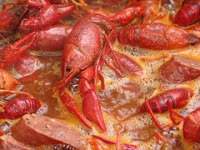 Cajuns are people who enjoy every moment of life. They aren’t city planners, architects, or engineers. They’re country people. Their thing is living in the moment. The greatest celebration of the moment on a daily basis is meals. Cajuns have an incredible zest about eating and putting their energy into food. They love texture, which is why they like spicy food and all kinds of food that has a lot of surface to it. Cajun philosophy center around the kitchen and around eating. As far as Cajuns are concerned, if you haven’t eaten with someone, you don’t know them.
Cajuns are people who enjoy every moment of life. They aren’t city planners, architects, or engineers. They’re country people. Their thing is living in the moment. The greatest celebration of the moment on a daily basis is meals. Cajuns have an incredible zest about eating and putting their energy into food. They love texture, which is why they like spicy food and all kinds of food that has a lot of surface to it. Cajun philosophy center around the kitchen and around eating. As far as Cajuns are concerned, if you haven’t eaten with someone, you don’t know them.Dance
Dancing is another example of living in the moment and celebrating life. What’s amazing when you go to Louisiana is that you see the oldest people dancing. People in there nineties will be out in the dance floor kicking up a storm. People of all ages go to the dance halls. So the dance hall is another place where Cajun culture comes together to celebrate the energy of life. One of the famous clubs is Fred’s in Mamou. If you walk in at 11 o’ clock on Saturday morning you’d find the place already hopping. The truth is that it’s all the people from the night before who are still there. Since there are no windows in the place no one has any idea or cares what time it is.
Coffee

Jokes, stories, and conversations are all a celebration of life and obviously the best place to do that is over a meal or a cup of coffee. Coffee is a central part of Cajuns culture. It’s a time to stop and talk. You don’t drink coffee while working.
Conversation
Cajuns like to talk and tell stories. One of my uncles in Louisiana still resents the telephone. He thinks that if people want to talk with you, they should drive over to your place. Then you’ll know it’s important and you’ll stop what you’re doing to have a talk.
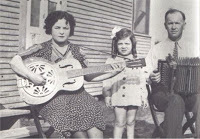 As a kid I remember sitting on the front porch in rocking chairs and endlessly listening to my uncles, grandfather, and grandmother telling stories and talking. That’s what I go home to Louisiana for now. I need the fix- to be with people who know how to talk.One time I went on a fishing trip with my Uncle Wib. We got up at three A.M. to go down to Grand Isle and we never stopped talking. We were supposed to get there by sunrise. At 10 o’clock I pointed that out. He said ‘Oh my God, I took the wrong road at Thibodaux five hours back.’ We were so deep in conversation that we forgot about everything else.
As a kid I remember sitting on the front porch in rocking chairs and endlessly listening to my uncles, grandfather, and grandmother telling stories and talking. That’s what I go home to Louisiana for now. I need the fix- to be with people who know how to talk.One time I went on a fishing trip with my Uncle Wib. We got up at three A.M. to go down to Grand Isle and we never stopped talking. We were supposed to get there by sunrise. At 10 o’clock I pointed that out. He said ‘Oh my God, I took the wrong road at Thibodaux five hours back.’ We were so deep in conversation that we forgot about everything else.To Cajuns nothing is more important than communication. We get so busy in our modern world that we don’t really have time to talk with each other – everything is oriented toward efficiency and arranged in bytes. Just enough is said to get by. But to Cajuns talking is an art.
What is your next Cajun book?
It is similar to Cajun Household Wisdom except it’s about the kitchen and eating. It’s called Cajun Kitchen Wisdom and has recipes for smothered chicken, lima beans and lots more. It contains sayings that have to do with the kitchen. One is “If de gumbo is good, you can put up with de cook.’ It also presents fishing and farming stories. The thing about Cajun humor is that much of it is about fishing or farming stories. The White Mule stories are prime examples of farming tales.One of my favorite White Mule stories will appear in the next book, Cajun Kitchen Wisdom.
It goes like this: A stranger walks into a bar in Abbeville and takes a seat. Halfway through his Jax, he pulls a huge tomato out of the paper bag he carried in, and sets it on the counter. The bartender sees him do it, but doesn’t even stop wiping his glasses. The man at the other end of the bar doesn’t come over either. So the stranger asks, “Y’all see dis tomata?’
The other two men nod.
“Sacre blue du couyon,” the stranger says. “Have you ever seed a tomata as dis heah?’
The other two men move over politely to take a closer look. The man who was at the far stool lifts the tomato, palms it, smells it, rubs it, smells his finger, then puts it back on the bar. The bartender doesn’t even bother to do the same. He just exchanges glances with the other man.
“Well?’ demands the stranger.
‘Well, ah foh one siurley have,’ says the man from the other stool.
The stranger can’t believe his ears but the other man tells him to wait. He goes outside, then comes back in, straining as he carries the biggest, most gigantic tomato the stranger’s even seen in his life – it has to weigh over ten pounds! The man places the tomato on the counter, and the stranger can’t resist touching it, smelling it, stroking it’s skin. Sheepishly, he puts his tomato back into its bag.
“Okay,” he says to the man.
“You got ta tell me, yah. What is yo’ secret?”
“Did you see dat white mule tied up outside?” the other man asks.
“Yah, ah sawed it,” the stranger nods.
“Well it’s dat mule.” “Ah doan unnerstand,” says the stranger. “Dere’s nuttin’ ta understand,” the other man explains.
“Everybod ‘roun heah knows about it” – he looks at the bartender, who nods for confirmation.
“When ah go out ta ready my ground for plantin’, dat white mule pulls mah plow. When ah’m plantin’, dat white mule pulls de cultivator- an’ when ah’m harvestin’ –“
“How much you recon’ you wan’ foh dat mule?” the other man breaks in.“I had date mule foh ten years now,” the other man says. “Date mule’s not foh sale.”
“Ah’ll give you a hunnert dollars cash for dat mule raht now,” says the stranger, plunking the gold coins down on the counter.
The other man looks at the coins for a second. “A hunnert dollars?” he says.“Sold!”
The stranger’s jubilant, but the man who sold the mule says, “Would you min’ if ah deliever him ta you in the mohnin? Dat mule was mah fren,’ and ah’d lake to let mah wife ‘n kids say good-bye to him properly.”
“No problem,” says the other man, and leaves the bar whistling.
But the first man got himself a real run of bad luck. First of all, he stays at the bar and gets caught in a bouree’ game- and lost the hundred dollars. Second of all, when he wakes up the next mroing, and went to his barn to get the mule ready to deliever he finds the mule dead as a doornail on the barn floor.
He felt real bad about that, real bad- especially because he didn’t have the hundred dollars to repay the stranger. But after awhile he got to thikin’ and realized that, as the saying goes, “a deal is a deal.” So he loaded the mule on his wagon, and headed for the other man’s farm. He parked the wagon down the road a bit and walked up to the house, where the man was waiting for him on his porch.
“I got some bad news for you, an’ some moh bad news,” the first man says.“What’s de bad news?” asks the stranger.
“Well you ‘member dat hunnert dollars you gave me las’ night for det mule? Ah got mahself caught in a bouree’ game and ah done las de whole ting.”
“Well dat surely is bad news,” the stranger agreed. “Dat’s real bad news. Ah feel rela badly foh you, losing dat money, sha.”
“But the other bad news is dat the mule you bought – ah found him daid in mah barn dis nohnin.”
Now the stranger understood the gravity of the situation all too well, and why the first man felt so bad. But he got to thiking, and realized to himself, “a deal’s a deal.”“Let me axe you a question, he finally said. “Whar is dat mule?”
The other man pointed down the road to the wagon. The stranger followed him so he could see for himself. After he was satisfied that it was the same mule he’d bought at the bar he helped the other man unload the mule.
“Jes’ leave him heah.” He said.
The first man said again how bad he felt about the whole thing, and drove off home with a heavy heart.
A few months went by before the first man had the nerve to go back to that bar in Abbeville for a Jax. But one night he did, and there was the stranger.
“Whar yo’ bin?” the sranger said. “I bin watchin’ foh you/”
“To tell ya de trewty. Ah felt so bad ‘bout losin dat money and dat mule dying an’ all, I didn’t have de noive ta see you again.”
“Doan feel bad no mod, the stranger said. “Ever’ting toined out okay.”“Whatch you mean okay?”
“I held me a raffle and made me a good profit.”
“A raffle?”
The stranger nodded. “Yah, ah raffled off dat mule. Al sole me two hunnerty tickets foh one dollar each.”
“You raffled off dat daid mule, and you made two hunnert dollars?” The first man was amazed, “and you had all dose folds mad at you?”
“No,” the stranger smiled. “Jes’ one poison was mad yah. But ah gave him his money back!”
These are stories I love. They reflect the culture and the ingenuity of daily life. They say, “If you can find a simple way to do it, find a simple way to do it, find a Cajun and he’ll make it ten times more complicated and you’ll have a lot more fun along the way.”
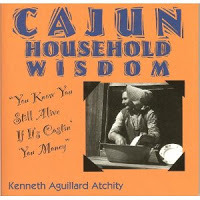
Kenneth Agillard Atchity is the author of several books including Cajun Household Wisdom: You Know You Still Alive If It’s Costin’ You Money published by Longmeadow Press. At the time of this printing he’s somewhere between Breaux Bridge and Opelousas eating his way across his native state.

Published on December 27, 2017 00:00
December 25, 2017
MERRY CHRISTMAS
Published on December 25, 2017 00:00
December 23, 2017
NEVER GIVE UP! by Ken Atchity
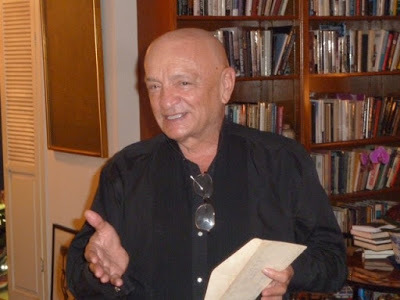 What are the ingredients of a New York Times Best Seller? Ken Atchity has the answers and they are not what you expect. He is a movie producer, author of over 20 nonfiction books and novels. He has spent his lifetime helping writers get started and improve their careers. Writing was in his blood from the beginning. ‘I never understood writers’ block because I never had it,” he says.
What are the ingredients of a New York Times Best Seller? Ken Atchity has the answers and they are not what you expect. He is a movie producer, author of over 20 nonfiction books and novels. He has spent his lifetime helping writers get started and improve their careers. Writing was in his blood from the beginning. ‘I never understood writers’ block because I never had it,” he says.What is the right mindset for being successful as a self-published writer?
It’s about what Winston Churchill said: “Never give, never give, never give up!” Don’t doubt yourself, keep working and learning more about your craft.
You wrote over 20 non-fiction books and novels. Are you still learning?
Yes, I am. I am always learning. I love writing because it’s a way of focusing your learning. I write the book first, then I do the research and spend years revising the book.
Some writers confessed that they don’t read books when they work on something new…
While you write your first draft, there is no need for you to read something else.The time to start reading other things is after you’ve finished it and improved it. You can always study yourself to death and never finish the first draft. And that’s the danger of it, or being influenced by other voices. It is much better to get your voice clear in the first draft and then give yourself a limited amount of time to do further research to make sure things are accurate. You would be surprised how often your imagination gets things pretty much right.
What do you appreciate most in a book?
I love books that take you to another world and keep you there the whole time. A storyteller who knows his craft will do this by not making a single mistake. A mistake is something that takes you suddenly out of that world.
You helped several authors to make the New York Times Best Sellers list. What are the ingredients of a bestseller?
That list is a victim of the changing times we are living now. In today’s world, a person needs to be famous or write about someone who is. The most recent three NY Times Best Sellers were about John Kennedy. But this list is not the only judge. Selling books on the Internet is a direct and immediate way to see if you could find an audience for your book.
Read more

Published on December 23, 2017 10:21
December 22, 2017
The Girly Book Club Reviews Jerry Amernic's The Last Witness
 Amazon / Amazon UK / Amazon CA / Barnes and Noble
Amazon / Amazon UK / Amazon CA / Barnes and Noble4/5 *
A dystopian story. 1984 meets The Holocaust. The Last Witness, written by Jerry Amernic, has one of the most fascinating premises for a book I’ve ever come across. Two years ago Amernic asked university students what they knew about The Holocaust and WWII. Their lack of knowledge and incorrect information in their answers inspired Amernic to write this futuristic thriller.
Within the first 4 pages of this book I thought three things:
1. It’s the future
2. It’s set in NYC
3. Although I was already sucked into the plot, the characters, and the language, there was a small part of me that knew it was probably going to break my heart over and over throughout the journey.
And I was right.
Jack Fisher is the last living Holocaust survivor. It’s 2039. Jack has a great-granddaughter Christine who is an 8th-grade history teacher. Christine is fighting the school board to have The Holocaust inserted back into the curriculum. When Christine suddenly goes missing, Jack soon finds himself in danger once again. We’re left to discover that what was once science is now personal belief, and what was once history has morphed into religion.
If Orwell is your guy, and Atwood (The Handmaid’s Tale) is your lady, then this is right up your alley.
For all our sakes, I hope this remains just a great novel and not a sign of things to come
Review by Sara Kafka

Published on December 22, 2017 00:00
December 20, 2017
Behind the scenes ... The Book of Leah Production Photos
Published on December 20, 2017 11:55














